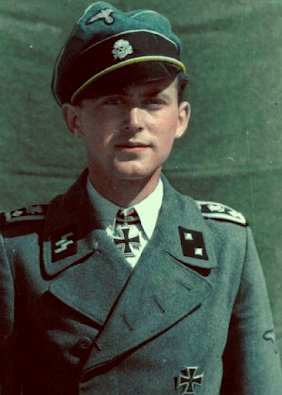Soviet dictator Joseph Stalin ordered 20 armies, 8,500 aircraft, and 6,300 tanks to march toward Berlin in April 1945. According to the author and historian Antony Beevor about 1,500,000 Soviet soldiers took part in the assault on the Berlin Defence Area. The forces available to General Helmuth Weidling for the city's defence included roughly 45,000 soldiers in several severely depleted German Army and Waffen-SS divisions. These divisions were supplemented by the police force, boys in the compulsory
Hitlerjugend, and 40,000 elderly men of the
Volkssturm. Civilian life in Berlin continued despite what is sometimes described as the largest artillery bombardment in history. The weight of ordnance delivered by Soviet artillery during the battle of Berlin was greater than the total tonnage dropped by Western Allied bombers on the city. People struggled to work in their offices, shops, and factories, while housewives lined up to exchange their ration tickets for the last amounts of food in the city. The most amazing feat accomplished by the people of Berlin was perhaps the fact that even at this time the post office still delivered letters to residents of the city. In the meantime, British Royal Air Force Mosquitos were conducting large tactical air raids against German positions inside Berlin on the nights of April 1945 and only over a 5-day period a total of 380 bombers were targeting the Berlin Defence Area. As the perimeter shrank and the surviving defenders fell back, they became concentrated into a small area in the city centre. By then there were about 10,000 German soldiers in the city centre, which was being assaulted from all sides. The Soviet Red Army committed heinous atrocities during, and in the days immediately following the assault in many areas of the city, vengeful Soviet troops engaged in
mass rape, pillage and murder. They looted stores and banks, shot innocent civilians, and raped countless number of women. Over 90,000 women visited doctors in Berlin as a result of rape. Berliners, especially women anxiously waited and prayed for Allied troops to come and liberate them from the systematic rape and torture of the Red Army. But American and British troops did not arrive to help them, not before a two-month long Red Army occupation. According to the author Peter Antill the number of German losses in Berlin was about 22,000 military dead and 22,000 civilian dead. In
A Statistical Reference to Casualty and Other Figures by the author Micheal Clodfelter, the number of civilian casualties is unknown, but 125,000 are estimated to have perished during the entire operation which included the battles of Seelow Heights and the Halbe. Top image: according to the author Barry Blunt this particular RAF de Havilland Mosquito ML963 code 8K-K of 571 Squadron completed 31 bombing raids on Berlin before it was finally lost on a raid to Berlin on April 10/11 1945. Credit: Nathan Howland. Second image: Stettin and Stralsund teens from a so-called
Hitlerjugend Volkssturm in conversation with a HJ leader and former Panzerjäger Leutnant d. R. Rudolf Krause. During the Battle of Berlin, Hitlerjugend and even some pre-teen Deutsches Jungvolk formed part of the last line of German defenses and were reportedly among the fiercest fighters. The picture was not taken in Berlin itself but at the Pyritz front north-east of Berlin in Feb. 1945. Immensely outnumbered, they didn't stand a chance. This was around the time Winston Churchill, Franklin D. Roosevelt and Joseph Stalin met at the Yalta Conference to discuss the division of Europe along their respective spheres of influence. Third still from the intensive Soviet artillery bombardment of Berlin in April 1945. Fourth image: a knocked out Königstiger n°101 of the Waffen-SS near the Columbushaus at Potsdamer Platz in May 1945. Potsdamer Platz was almost completely destroyed during the Battle of Berlin. Only Weinhaus Huth and the ruins of the Hotel Esplanade were left standing in the once so lively square. Bottom image: Soviet Red Army in vanquished Berlin in May 1945. Credit: Olga Shirnina. SU stock photo. All photos in the PD.










































